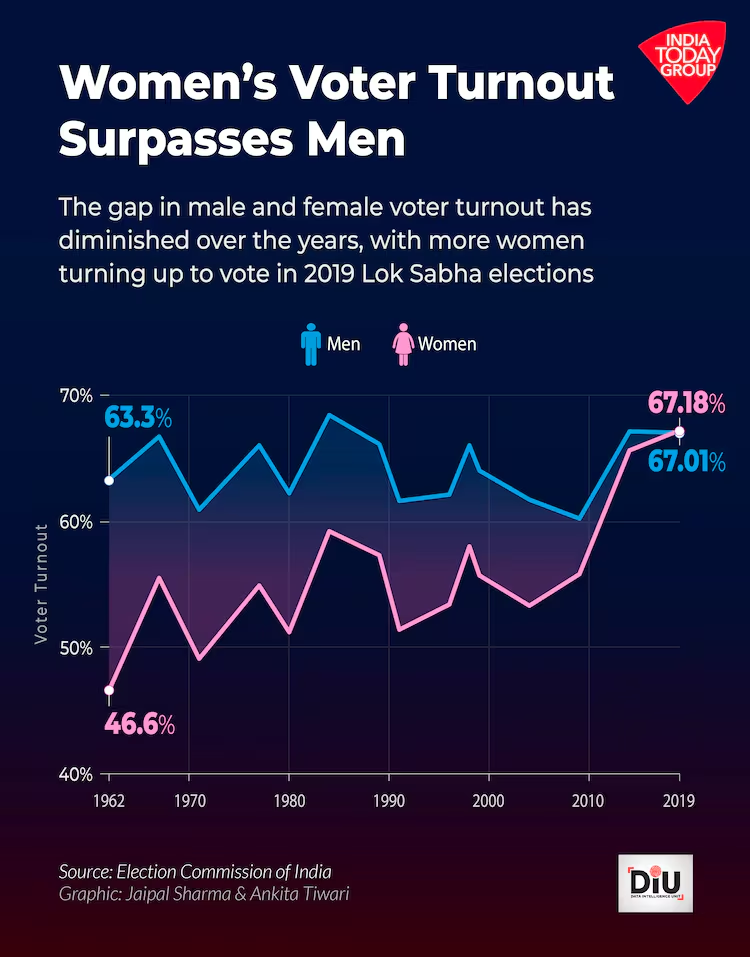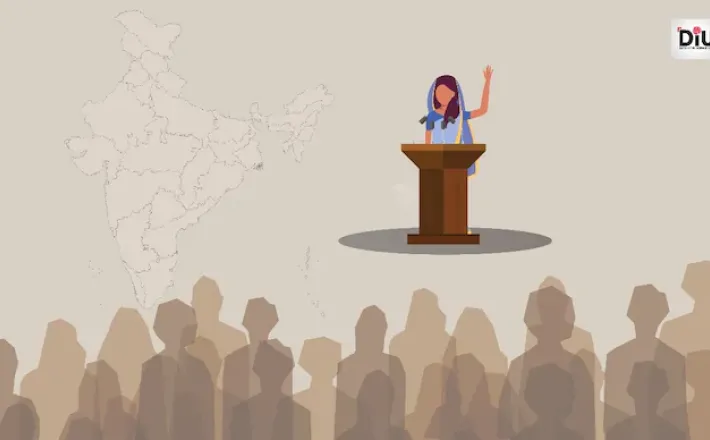Increasing women's role in Indian politics: Challenges persist
Source: India Today
A historic law, the Nari Shakti Vandan Adhiniyam, 2023, mandates the reservation of one-third of the total seats in the Lok Sabha, state Assemblies, and the Legislative Assembly of the National Capital Territory of Delhi for women.
In 2023, a historic law was passed to usher more women in governance. The Nari Shakti Vandan Adhiniyam, 2023, mandates the reservation of one-third of the total seats in the Lok Sabha, state Assemblies, and the Legislative Assembly of the National Capital Territory of Delhi for women. But representation in leadership isn’t the only sign of gender parity in politics — active participation of the women electorate is also paramount.
So, how has India fared in both regards so far? India Today’s Data Intelligence Unit analysed the turnout data from 1962 to 2019 and candidates’ data from 1957 to 2019 and found a mostly positive trend.
TURNOUT GAP NARROWED
In 1962, men's turnout stood at 63.3 per cent, while women's turnout was notably lower at 46.6 per cent, indicating a considerable gap of 16.7 per cent. This gap fluctuated over the subsequent decades but generally narrowed. For instance, in 2014, men's turnout was 67.1 per cent, while women's turnout increased substantially to 65.6 per cent, resulting in a smaller gap of 1.5 per cent.
Read here the full article published by India Today on 13 April 2024.
Image source: India Today


A historic law, the Nari Shakti Vandan Adhiniyam, 2023, mandates the reservation of one-third of the total seats in the Lok Sabha, state Assemblies, and the Legislative Assembly of the National Capital Territory of Delhi for women.
In 2023, a historic law was passed to usher more women in governance. The Nari Shakti Vandan Adhiniyam, 2023, mandates the reservation of one-third of the total seats in the Lok Sabha, state Assemblies, and the Legislative Assembly of the National Capital Territory of Delhi for women. But representation in leadership isn’t the only sign of gender parity in politics — active participation of the women electorate is also paramount.
So, how has India fared in both regards so far? India Today’s Data Intelligence Unit analysed the turnout data from 1962 to 2019 and candidates’ data from 1957 to 2019 and found a mostly positive trend.
TURNOUT GAP NARROWED
In 1962, men's turnout stood at 63.3 per cent, while women's turnout was notably lower at 46.6 per cent, indicating a considerable gap of 16.7 per cent. This gap fluctuated over the subsequent decades but generally narrowed. For instance, in 2014, men's turnout was 67.1 per cent, while women's turnout increased substantially to 65.6 per cent, resulting in a smaller gap of 1.5 per cent.
Read here the full article published by India Today on 13 April 2024.
Image source: India Today
